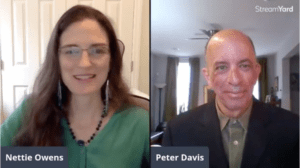When should a business start implementing marketing automation?
Given that we are still dealing with the pandemic, obviously, many things have shifted from face-to-face to being online to be some level of virtual.
But as business owners, we still want to give the same high-quality service to our clients and customers. And so, automation helps us to do that. When the world opens back up again, those of us who may work with people face-to-face will still want to be able to create a consistent, excellent experience at all phases of the client lifecycle.
The best place is to first think about what you want and how you want things to operate in your business.
I always tell people, figure out the system first and then focus on automation.
What do you want the experience to be at all phases of what we call the customer lifecycle? That’s why I say that I help people attract, convert, and serve their ideal clients – because each of those three stages is important.
And there are things we can automate in each one of those phases. But before you do, you need to sit back and think about:
· How am I attracting people to my business?
· How do I want to attract them?
· How am I converting?
· Do I want to send out invoices?
· Or do I want to automatically have recurring payments come out of the person’s account?
· How am I making sure that I’m delivering on the promise that I make?
And once you’re clear on the experience you want people to have, then you can go back and say, “Okay, what pieces of this can I automate so that I can be doing something else while people are still being served?”
“I talk with people about systems as well. And if you automate a bad system, you’re going to get the same result or even worse. Take the time to plan and make sure the steps all work before you automate the process.”
I think so often when people are working with a marketing consultant or strategist; they probably get frustrated by how we all start with: Who’s your ideal client? What’s your client avatar? Because do you know who is your ideal client and if that person wants to get things by text or email? That’s why we want to know that before we can automate, so we can have a good system and have good automation.
“Any consultant that you bring on should always ask you three questions. Who do you serve? What do you do to serve them? And, where do you want to go? If they don’t ask you those questions, then they don’t have enough information to give you any direction.”
What role does marketing automation play in each stage of the lifecycle of the customer?
In the first stage, the attract phase, it’s about making sure people are aware of you. It’s about giving somebody a free sample of your genius in exchange for their contact information – so you can add them to your list. That can be an automated process of saying, “Hey, go to this link, download my free resource, and give me your email address.” And then now you can continue to nurture that relationship – which can be through a series of automated emails.
Then in the Convert stage, that’s all about accepting the money and figuring out what your payment process is going to be. Again, are you sending out automated invoices? Or are you setting up recurring billing? And then, before I move on, when is it the right time to ask for the sale?
There’s a whole process that we call lead scoring, which means based on the number of times that they’re opening emails and clicking on links and interacting with us, that they’re probably ready to buy after X number of times. That’s the time to make a phone call or send them the emails related to purchase something.
The third phase is the serving phase, and that’s about how you deliver on the promise. How do you automatically give them access to the login information for the coaching program? Or send them a link to your calendar so that they can schedule their intake session with you? Or check for client satisfaction? Are they happy with the services? How do you remedy issues automatically if they’re unhappy? If they’re happy? How do you request testimonials or referrals? All of that can be automated so that you, as a business owner, can be focused on the other parts of your business.
It’s almost like you’re hiring an additional team member.
“When we look at automation, you may think it can be pricey to put automation into place. But if you look at the time that is saved by not hiring a person to send each individual email, to follow up on those bills, to ensure that you remember to ask for that referral – all of those things that takes that take energy and time from a person – we can use systems to make that happen. So, oftentimes, it will be a less expensive option than hiring a person.”
What is the best marketing automation platform?
That’s sort of a trick question because the answer is: the one you’re going to use – that’s the best one. You should be looking for a combination of the best mix of cost, features, usability, and integrations – how well it works with your other tools. When you find the one that has all of those, then you know you’ve found one that you’re actually going to use.
“That’s the same answer I give when people ask me what the best calendar to use is. It’s the one that you’ll actually use.”
3 Action Steps
1.Establish a clear vision of the experience you want your clients to have.
2.Implement marketing automation during all three phases of the customer lifecycle to save yourself time and money.
3.Choose a marketing automation platform that you will use.
Connect with Denise Dennis on LinkedIn or at www.Automate25Things.com to receive “25 Things Every Coach Should Automate.”
Please comment below. I would love to hear from you.














No comments yet.